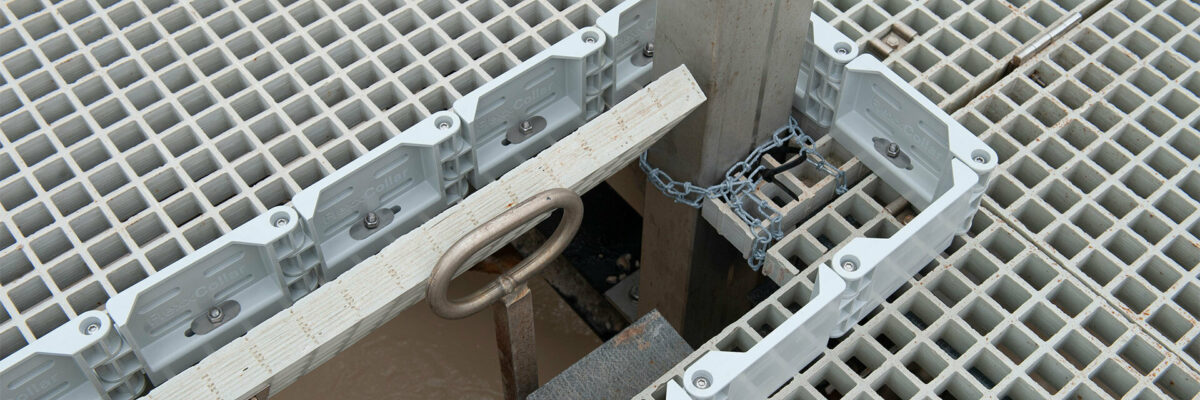Kick plates and toe boards
As well as guard rails, kick plates or toe boards must be installed to guarantee safe working at heights, including on landings, platform floors and open mesh floors.
Kick plates and toe boards
FlexxCollar is a flexible kick plate system that can be used on open mesh flooring, landings, and platforms. It is a flexible polyester kick plate system. Polyester is both strong and corrosion resistant. It can be attached easily to the open mesh floor and requires no drilling or welding.
The FlexxCollar kick plate offers protection against the potential hazards of falling objects and against people stumbling or falling.
When are kick plates or toe boards mandatory?
As soon as there is a risk that objects could fall from landings or the platform floor it is important that people below are protected. Such objects could include tools, fittings or materials.
A kick plate or toe board ensures that nothing can fall from landings or platform floors. According to Arbobesluit 3.16 (Working Conditions Decree), a kick plate or toe board is mandatory when there is a risk that objects could fall from landings.
How high should a kick plate be?
The European standard, NEN-EN 14122 applies to edge protection such as kick plates: for permanent landings and platform floors, the kick plate must be at least 100 mm high.
A kick plate or toe board is mandatory if there is a potential hazard of falling objects.
The kick plate should offer protection from this.
If a landing or platform floor must comply with NEN-EN 13374 or NEN-EN 14122, a kick plate is mandatory. The FlexxCollar kick plate system has NEN-EN 14122 certification.
Installing kick plates
There are various methods for fitting kick plates to guard rails or to open mesh or other floors. It is vital that the edge protection installation method does not weaken the guard rails or the open mesh floor or result in rusting, as is the case with welding or drilling.
The best solution to prevent this are kick plates with a clamp connection fitting.
How do you attach kick plates to your landings or open mesh floor?
There are various ways to fit a kick plate to guard rails, a platform floor or open mesh floor.
Welding kick plates
Welding a kick plate is a labor intensive and hazardous option. This will damage guard rails and result in the metal parts rusting.
Drilling and fitting kick plates
This option is better than welding, but also results in weak areas where rust can occur, particularly around the drill holes.
FlexxCollar is a flexible kick plate system that can be used on open mesh flooring, landings, and platforms. A flexible polyester kick plate system that is both strong and corrosion resistant. The system is easy to attach to the open mesh floor using a clamp connection fitting. This means that no drilling or welding is required.
The FlexxCollar kick plate offers protection against the potential hazards of falling objects and against people stumbling or falling.
Is a kick plate always mandatory?
A kick plate is always mandatory on landings or platform floors if there is a risk that objects could fall. This includes tools, fittings and other small or large objects that can fall from landings, or be kicked or knocked.
Kick plate according to the Working Conditions Decree (Arbo)
If there is a danger that people will be struck or hit by falling objects, products or components of these, it is mandatory that you take collective protection measures. For more information, see the Working Conditions Decree.
Europese norm schopranden en kantplanken (randbeveiliging)
European standard for kick plates and toe boards (edge protection) NEN-EN 14122 is a European standard for collective fall protection that states that a kick plate must be at least 100 mm high for permanent guard rails.
 English
English
 Nederlands
Nederlands
 Deutsch
Deutsch








